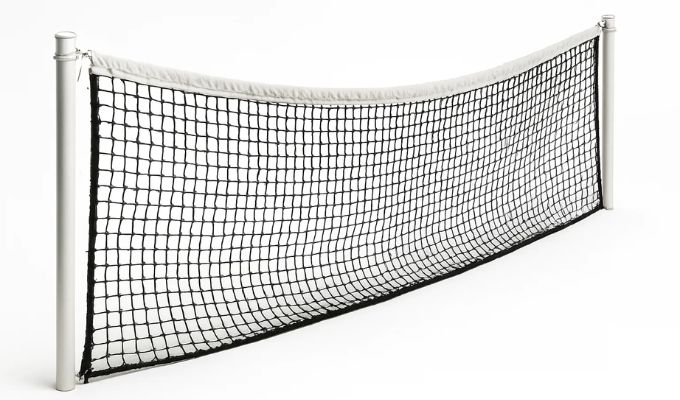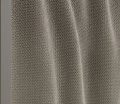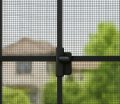
Insects and bugs can be a nuisance, particularly when you wish to feel fresh air without having to trade off comfort. That’s when the Barrier Free Fly Mesh becomes integral to contemporary homes and commercial establishments. The screens provide hassle-free, obstruction-free movement while excluding insects and insects and yet permitting natural ventilation within. But to ensure your mesh system remains practical and attractive for years to come, regular maintenance is essential. This blog will explore practical and easy-to-follow maintenance tips to keep your Barrier-Free Fly Mesh looking as good as new.

Understanding Barrier-Free Fly Mesh
Before going into the maintenance process, it is worth noting what distinguishes the Barrier Free Fly Mesh from other fly screens. The name says it all – these mesh systems provide a barrier-free threshold, meaning there is no step or barrier at the bottom. This makes them suitable for households with kids, older adults, or wheelchair users. They fuse style, convenience, and functionality, making them a premium option for doors, patios, and balconies.
1. Weekly Dusting is a Requirement
Dust and dirt are your screen’s arch-nemesis. Dust, which settles over time, appears ugly and diminishes the mesh’s usability. Gently sweep dust off the mesh surface with a soft brush, microfiber, or handheld vacuum cleaner. This easy step performed weekly, prevents build-up and prolongs the mesh life.
Tip: Brush always in the mesh fibers’ direction to prevent damage.
2. Mild Washing for Greater Cleansing
At least monthly, giving your Barrier Free Fly Mesh a thorough clean is a good idea. Use a mild soap solution and a soft sponge or cloth. Harsh detergents, bleach, and abrasive pads will damage the mesh fabric or corrode aluminum frames. After cleaning, rinse with plain water and dry it with a clean cloth.
Tip: Disassemble detachable parts, if feasible, for simple and more effective cleaning.
3. Inspect the Tracks and Frames
The smooth operation of a Barrier Free Fly Mesh relies significantly on its tracks. The lower rail can get clogged with dust, tiny pebbles, or insect debris, preventing the sliding or folding action. Brush or vacuum the tracks clean and make sure there are no blockages.
If your system utilizes rollers or magnets, check these areas as well. Any visible dirt or damage must be handled immediately to prevent long-term complications.
4. Lubricate Moving Parts from Time to Time
Although the mesh system has been engineered to operate with little resistance, applying a silicone-based lubricant on the sliding rails and moving parts every few months will ensure smooth, quiet operation.
Avoid: Grease or oil-based lubricants that attract dust and stain the mesh or frame.
5. Inspect for Wear and Tear
Regular checkups are essential. Be on the lookout for:
- Tears or punctures in the mesh
- Frays in the edges
- Rust marks on frames (particularly if mounted in coastal regions)
- Battered magnetic seals or locks
Early detection of these problems enables immediate repairs at a much lower cost than the ultimate replacements later.
6. Keep Pets Out of the Mesh
Pets can also be attracted to the mesh screen and may scratch or lean against it. This can weaken the mesh and shorten its life. You could use pet deterrent sprays or train your pets to avoid the screen area.
If you have pets, consider reinforcing Barrier Free Fly Mesh, which is specially made to bear more pressure.
7. Close the Mesh When Not in Use
Though the mesh is made for constant airflow, it’s best to fold or close it when not in use—particularly during extreme weather like high winds or dust storms. This keeps the undue strain and the mesh from tearing or being blown out of the frame.
8. Stay Away from Sharp Objects Around the Mesh
Ensure no sharp objects, furniture edges, or metal pieces touch the mesh. Small punctures may develop into large tears if not repaired instantly. Fix it with mesh repair kits or get professional help in case of accidental damage.
9. Seasonal Deep Cleaning
Apart from usual cleaning, schedule a seasonal deep-cleaning session. It involves:
- Removing detachable parts
- Cleaning and lubricating the whole system
- Realigning the mesh if it appears saggy or misfitted
- Tightening any loose screws or fittings
This detailed check ensures your Barrier Free Fly Mesh system remains efficient and elegant all year round.
10. Professional Servicing Once a Year
Even with the best DIY efforts, some areas might need expert attention. Consider scheduling professional maintenance annually. Technicians can:
- Perform thorough inspections
- Realign frames and mesh.
- Replace damaged parts
- Suggest upgrades or enhancements based on new technology.
Consider it like a checkup of your fly mesh system’s health.

Conclusion
Barrier Free Fly Mesh is not only a screen—it’s an experience of improved hygiene, ease of use, and aesthetics in your home. Like any other practical part of your home, it must also be cared for and nurtured. By the simple practices described below, you maintain its streamlined look and keep it working perfectly well for years.
With little maintenance, your Barrier Free Fly Mesh can keep going, safeguarding your home against unwanted pests while providing convenient indoor-outdoor living. Take good care of it; it will repay you with sturdiness, beauty, and comfort through all seasons.













